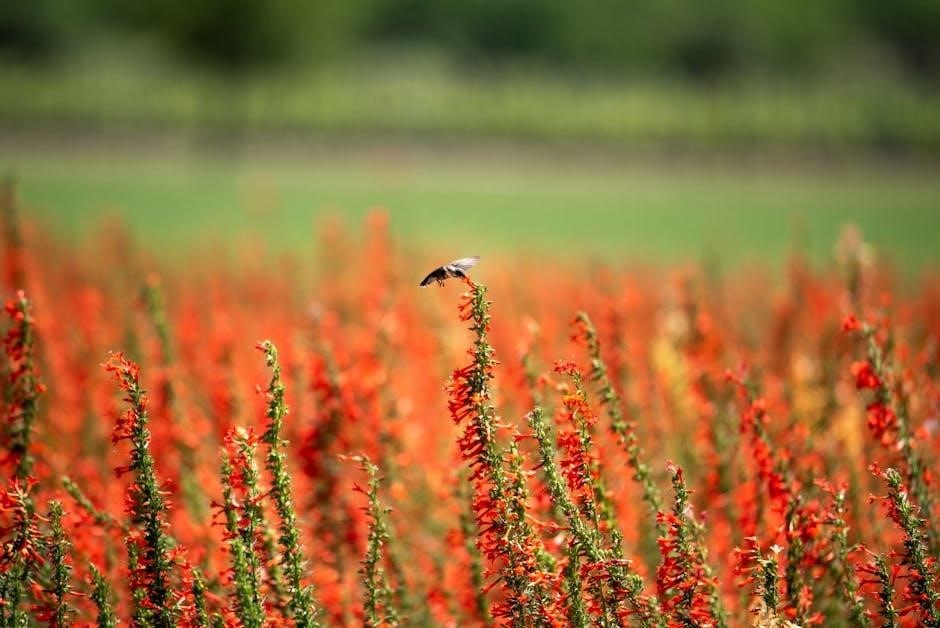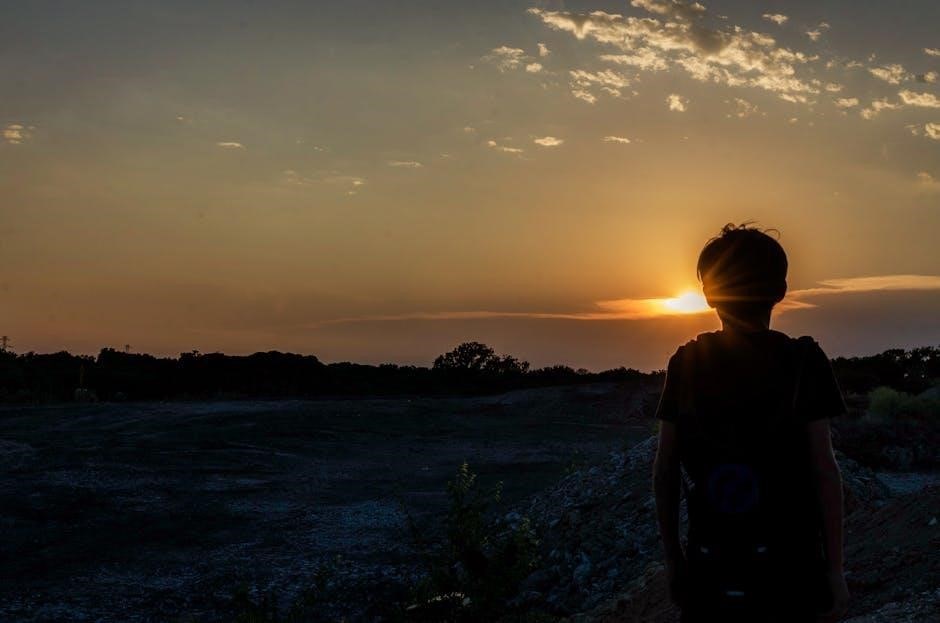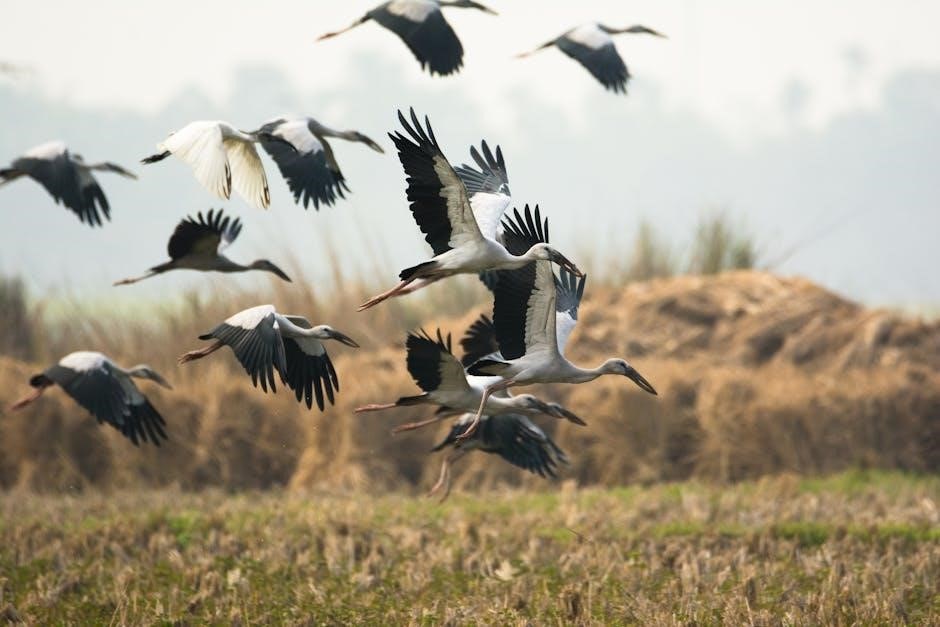Texas birding offers year-round opportunities to see diverse species. TPWD’s trails make it easier than ever to find hotspots. Learn to identify birds with a Texas field guide!
The Allure of Birdwatching in Texas
Birding in Texas presents a unique opportunity to connect with nature and appreciate the state’s diverse avian life. From the Gulf Coast to the Panhandle, Texas boasts a wide range of habitats that support a remarkable variety of bird species. Birdwatchers of all levels can enjoy exploring the state’s many birding hotspots, observing both resident and migratory birds in their natural environments. A field guide is essential for identifying these birds, as many species have similar appearances or exhibit variations in plumage based on age, sex, or season. With the help of a comprehensive guide, birders can learn to distinguish between different species and deepen their understanding of Texas’s rich birdlife. Furthermore, birdwatching promotes conservation awareness and encourages individuals to protect the habitats that sustain these fascinating creatures. Whether you’re a seasoned birder or just starting out, Texas offers endless opportunities for discovery and enjoyment in the world of birdwatching.

Identifying Texas Birds
Identifying Texas birds can be a rewarding challenge. Use field guides to learn key characteristics like size, color, markings, and habitat. Observe behavior and listen to songs for further clues.
Key Characteristics for Bird Identification
Identifying birds in Texas involves observing several key characteristics. Start by noting the bird’s size and overall shape; is it small and compact like a chickadee, or large and soaring like a hawk? Pay close attention to its plumage – the color patterns and markings on its feathers. Note the presence of any distinctive features such as wing bars, eye stripes, or a colored patch on the head or breast. Consider the bird’s habitat; where did you see it – in a forest, grassland, or near water? Observe its behavior; how does it forage for food, does it hop or walk? Listen carefully to its songs and calls; each species has its own unique vocalizations. Using a field guide tailored to Texas birds can be immensely helpful in narrowing down possibilities based on these observations. Note if the bird is boldfaced in the field guide! Remember that plumage can vary based on age, sex, and time of year, so consulting multiple photos and descriptions is wise. With practice, you’ll become more adept at using these characteristics to identify the diverse array of birds found in Texas, enhancing your birding experience. For example, the Eastern Kingbird is blackish above and white below with a broad white band at the end of its tail.

Common Backyard Birds of Texas
Many bird species visit Texas backyards. A field guide helps distinguish male, female, and juvenile plumages. Learn markings to become a bird expert and enhance backyard birding!
Attracting Birds to Your Backyard
Attracting birds to your Texas backyard can be a rewarding experience. Providing food, water, and shelter are key to drawing in a variety of species. Bird feeders are a great way to offer a consistent food source, but it’s important to keep them clean to prevent the spread of disease. Different types of feeders can attract different birds, so experiment with various styles and seed mixes. Water is also essential, especially during the hot Texas summers. A bird bath or shallow dish of water will provide a place for birds to drink and bathe. Planting native trees, shrubs, and flowers will provide natural food sources and shelter for birds. Consider plants that offer berries, seeds, or nectar. A birdhouse can also provide a safe nesting place for certain species. Remember to choose a birdhouse that is appropriate for the size and type of bird you want to attract. With a little effort, you can create a backyard oasis that is teeming with birds. A good field guide will help you identify the birds that visit your yard and learn more about their habits and needs. Enjoy the beauty and wonder of the birds that share your space!
Birds of Prey in Texas
Texas is home to a diverse array of birds of prey, also known as raptors, which are birds that primarily hunt and feed on other animals. These majestic birds play a crucial role in maintaining the balance of the ecosystem by controlling populations of rodents, insects, and other prey. Some of the most common birds of prey in Texas include hawks, eagles, falcons, and owls. Hawks are known for their keen eyesight and powerful talons, which they use to capture their prey. Eagles are larger and more imposing than hawks, and they are often seen soaring high above the landscape. Falcons are the fastest birds in the world, capable of diving at speeds of over 200 miles per hour. Owls are nocturnal hunters, with specialized feathers that allow them to fly silently and keen hearing that helps them locate prey in the dark. Identifying birds of prey can be challenging, but a good field guide can be an invaluable resource. Look for key characteristics such as size, shape, color, and markings. Also, pay attention to the bird’s behavior and habitat. Some birds of prey prefer open areas, while others prefer forests or wetlands. With practice and patience, you can learn to identify the many fascinating birds of prey that call Texas home. Remember that first-year Bald Eagles can be mistaken for Golden Eagles.

Water Birds of Texas
Texas, with its extensive coastline, numerous lakes, rivers, and wetlands, provides a rich habitat for a wide variety of water birds. These birds are adapted to aquatic environments and can be found wading, swimming, diving, and foraging in and around water bodies. Identifying water birds can be a rewarding experience for birdwatchers of all levels. A good field guide is essential for distinguishing between the different species. Look for key features such as size, shape, color, bill shape, and leg length. Some common water birds in Texas include ducks, geese, herons, egrets, ibis, and shorebirds. Ducks and geese are waterfowl that are often seen swimming in lakes and ponds. Herons and egrets are wading birds with long legs and necks that they use to hunt for fish and other aquatic prey in shallow water. Ibis are also wading birds, but they have long, curved bills that they use to probe the mud for food. Shorebirds are a diverse group of birds that can be found along the coast and in other wetland areas. They have a variety of bill shapes and sizes, depending on their feeding habits. The Double-Crested Cormorant can be mistaken for the Neotropic Cormorant. The jacanas are identifiable by their… Remember to observe the bird’s behavior and habitat, as this can also help with identification. For example, some water birds prefer freshwater habitats, while others prefer saltwater habitats.
Texas Birding Hotspots
Texas offers many birding hotspots thanks to diverse eco-regions. TPWD’s wildlife trails make finding the best locations easier. Grab your field guide and explore these birding destinations!
Wildlife Trails for Birdwatching
Texas boasts an impressive array of wildlife trails, offering birdwatchers unparalleled access to diverse habitats and avian species across the state. These trails, often highlighted in comprehensive field guides, cater to birders of all skill levels, from novice enthusiasts to seasoned experts. The Texas Parks and Wildlife Department (TPWD) has meticulously curated these trails, ensuring they showcase the best birding opportunities while promoting conservation efforts. A good field guide will highlight key characteristics for bird identification, such as plumage variations (male, female, juvenile), size, song, and behavior, all essential for successful birding expeditions. Many trails feature interpretive signage, providing valuable insights into the local flora, fauna, and ecological significance of the area. Field guides often include maps and detailed descriptions of these trails, making it easier to navigate and locate prime birding spots. Whether you’re seeking migratory waterfowl along the coast or elusive songbirds in the forests, Texas’ wildlife trails provide an unforgettable birding experience. Remember to pack your binoculars, field guide, and a sense of adventure as you embark on your journey to discover the avian wonders of Texas.
Birding Resources in Texas
The TPWD offers resources such as wildlife trails, bird identification guides, and conservation information. They are key for birding in Texas and for learning more about local species.
Texas Parks and Wildlife Department Resources
The Texas Parks and Wildlife Department (TPWD) is a crucial resource for birders in Texas, providing a wealth of information and support for both novice and experienced enthusiasts. TPWD offers numerous resources to enhance your birding experience, from detailed wildlife trail maps that pinpoint prime birdwatching locations across the state to comprehensive bird identification guides featuring clear illustrations and descriptions of various species, including male, female, and juvenile plumages. These guides are invaluable for distinguishing between similar-looking birds like the Double-Crested Cormorant and the Neotropic Cormorant. Additionally, TPWD actively promotes bird conservation efforts, providing information on how residents can take precautions against issues like bird flu by removing bird feeders and practicing good hygiene. TPWD also collaborates with organizations like Audubon to offer educational programs such as bird walks, helping people learn how to identify birds and understand their habitats. Whether you’re interested in identifying common backyard birds, exploring wildlife trails, or contributing to bird conservation, TPWD is a go-to resource for all things bird-related in Texas.
Bird Conservation Efforts in Texas
Texas boasts a diverse bird population, making bird conservation efforts particularly vital in the state. Several organizations and initiatives are dedicated to protecting these avian species and their habitats. The Texas Parks and Wildlife Department (TPWD) plays a significant role, offering resources and guidance on conservation practices. TPWD collaborates with groups like Audubon to conduct educational programs, such as bird walks, which raise awareness about bird identification and habitat preservation. Additionally, TPWD encourages residents to take precautions against issues like bird flu by removing bird feeders and practicing good hygiene, helping to slow the spread of the disease among bird populations. Other conservation efforts address threats like open pits from the oil and gas industry, which can be hazardous to birds. Advocacy groups work to influence policies and regulations to minimize these dangers. Furthermore, restoration projects are underway to protect and restore critical bird habitats, with researchers focusing on prioritizing islands for conservation efforts. By understanding the challenges faced by Texas birds and supporting conservation initiatives, bird enthusiasts can contribute to the long-term health and diversity of the state’s avian communities. These collective efforts are essential for ensuring that future generations can enjoy the rich birdlife of Texas.

Dealing with Bird-Related Issues
Texas’s diverse bird population can sometimes lead to various issues that require attention and effective solutions. One significant concern is bird flu, which has been detected in multiple locations across the state. To mitigate the spread of this disease, the Texas Parks and Wildlife Department (TPWD) advises residents to take precautions, such as temporarily removing bird feeders and practicing diligent hygiene. Another issue arises from the presence of open pits in the oil and gas industry, which can attract birds and pose a hazard. Environmental organizations advocate for stricter regulations and penalties for companies that fail to secure these pits, aiming to prevent bird fatalities. Identifying nuisance bird species and implementing appropriate deterrents is also crucial in residential and agricultural settings. For instance, understanding bird behavior and utilizing humane methods to discourage unwanted nesting or feeding can help minimize conflicts. Furthermore, being aware of potential hazards like window collisions and providing solutions such as window decals can significantly reduce bird injuries and deaths. When dealing with injured or orphaned birds, it’s essential to contact licensed wildlife rehabilitators who can provide proper care and treatment. By addressing these bird-related issues proactively and responsibly, Texans can help ensure the well-being of both birds and their communities. Remember to consult local resources and experts for guidance on specific situations and ethical solutions, promoting a harmonious coexistence between humans and birds.





